We often focus on the northern part of Aso, but this time I’d like to explore the southern region. Understanding both areas of Aso is crucial to fully grasp the story we are always talking about.
Welcome back to Michino Eki Aso!
The other day, I had the opportunity to visit Tateno Dam, located in Minamiaso village. This dam, designed as a flowing water dam, is used for a specific purpose: flood control. During floods, it temporarily stores water to regulate and mitigate downstream impacts. Unlike other storage dams, Tateno Dam isn’t often seen at full capacity. However, I was fortunate to see it filled to the brim. Because it was the perfect time that they were doing a test conducted to make sure of its structural integrity and flood resistance.
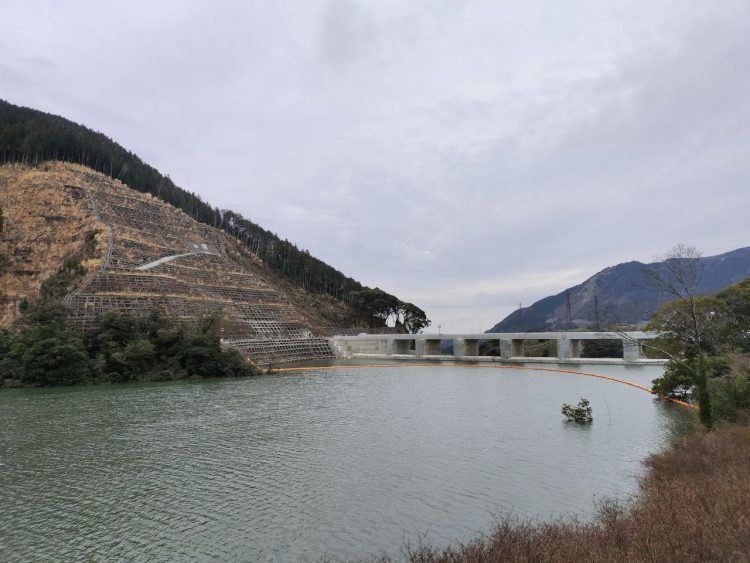
What added to the experience was listening to the explanations of the local Aso Geopark Guide about Tateno Dam and some interesting folklore. It deepened my understanding of Aso, and of course I’d like to share it with you through my blog.
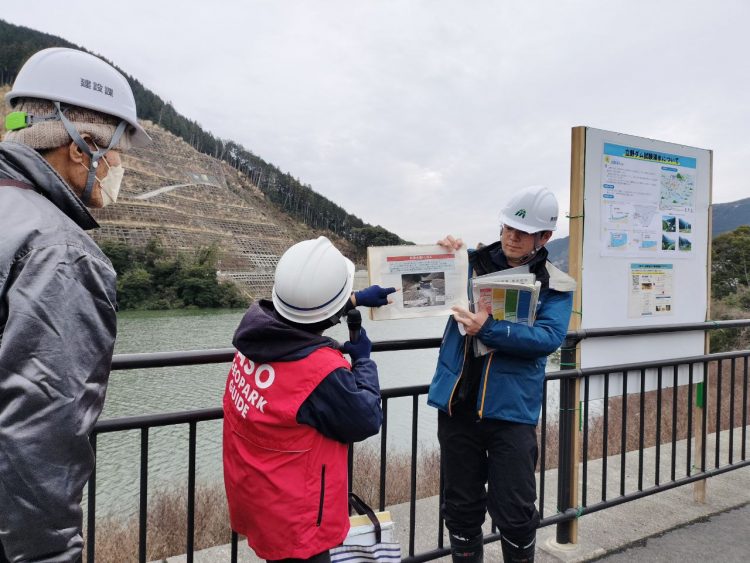
Let’s get started…..
Mount Aso and its surrounding caldera were formed through a series of volcanic eruptions millions of years ago. The central part of the mountain is now known as five peaks, which are iconic hiking attractions of Aso. Although each peak—Nakadake, Takadake, Nekodake, Kishimadake, and Eboshidake—has its own name, collectively they are called as Mt. Aso. That’s why many visitors sometimes miss Mt. Aso, although they’ve already stepped on it. Currently, only Nakadake Crater remains active.
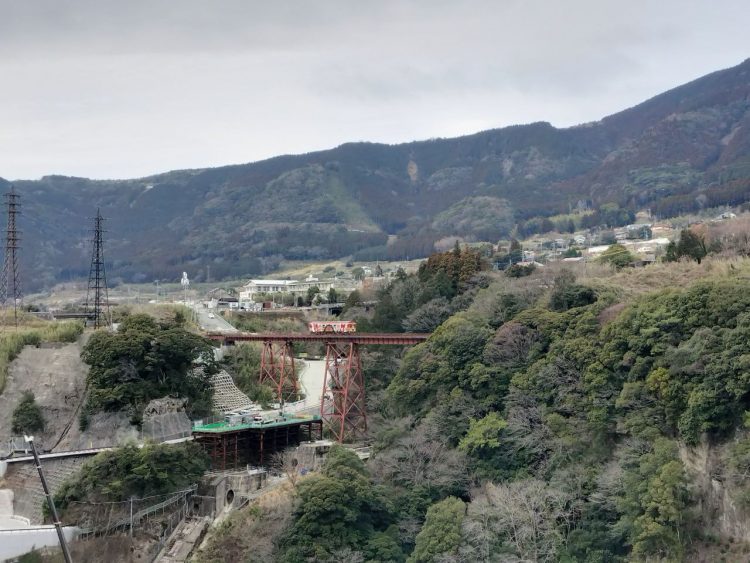
Aso was once a vast lake, with Aso Valley to the north and Nango Valley to the south, surrounded by the completely enclosed outer rim of Aso. There’s a folklore about the formation of Aso’s caldera entrance, now known as Tateno. According to local belief, the deity Tate Iwatatsu no Mikoto created Tateno’s entrance to make lands and farms where people could reside. It’s said that the deity kicked out the western part of the mountain rim, as it was the weakest and he drained water from the lake and formed villages and fields for human habitation. Hence, various traditional activities have been celebrated to honor this deity in Aso.

From a scientific standpoint, geological processes such as tectonic activity and volcanic eruptions over thousands or millions of years shaped the landscape, resulting in valleys, gorges, and distinctive features like the Tateno Entrance. Regardless of the origin, Tateno is now serving as the main entrance for water drainage and keeping everyone’s life. Tateno Dam was constructed to control flood risks due to heavy rainfall and snowmelt.
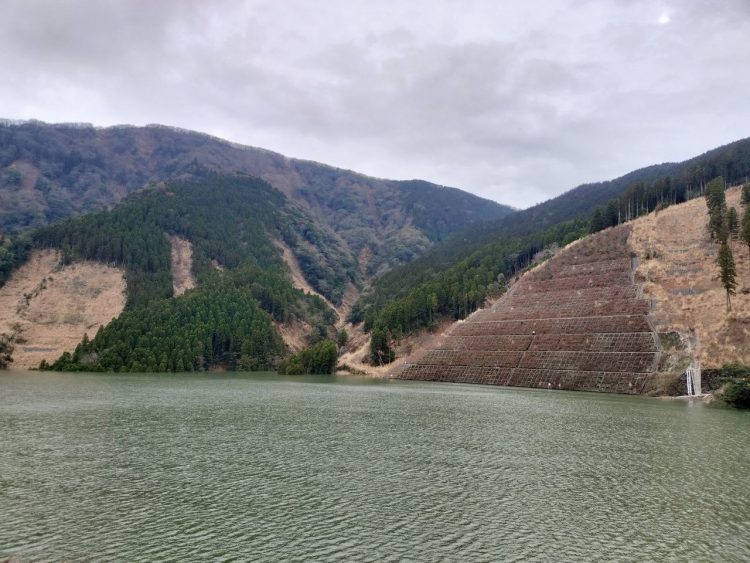
Thanks to Tateno Dam and Tateno, we can appreciate the wild and unique beauty of Aso and become part of its history.
That’s all for today’s blog. As a bonus, I got some pictures of the illuminated art at Tateno Dam wall. It’s funny that I was literally on that train and did not know about the illumination. LOL.How dumb I was !
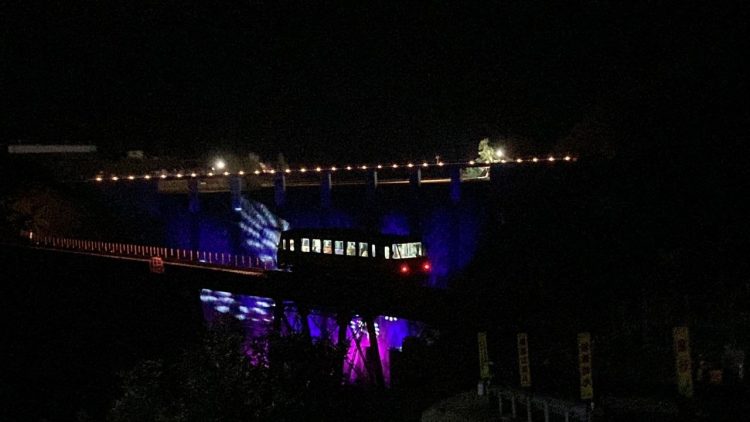
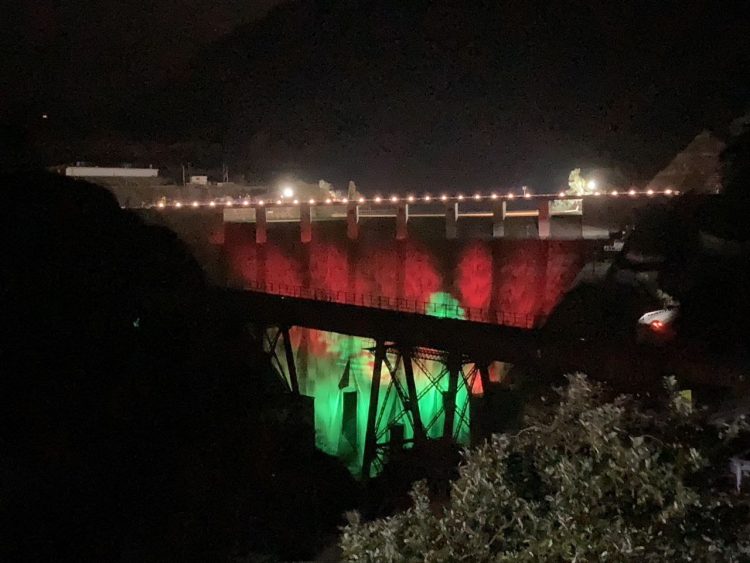
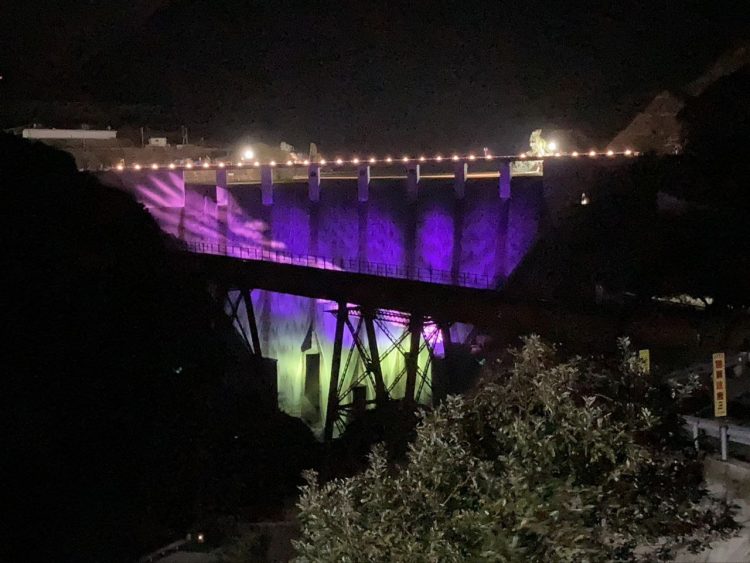
Thank you for reading my blog today, and I hope to see you in Aso soon.
Min Min

